As the Colorado River Declines, Some Upstream Look to Use it Before They Lose it
RANGELY, Colo.—The fossil fuel industry once boomed here.
Oil pump jacks dot the landscape around the community and serve as a reminder of the town’s origins. Prairie dogs race across the two-lane highway outside of town that is filled with thousands of Mormon crickets during the summer.
But times are changing. With the nation beginning to transition from fossil fuels to clean energy like solar and wind power, oil and gas companies are beginning to plug their wells here.
So local leaders are looking for the next economic development opportunity. And they may have found their solution—divert more Colorado River water with a new dam and reservoir that will generate more hydropower, irrigate more agriculture and store more water for emergencies.
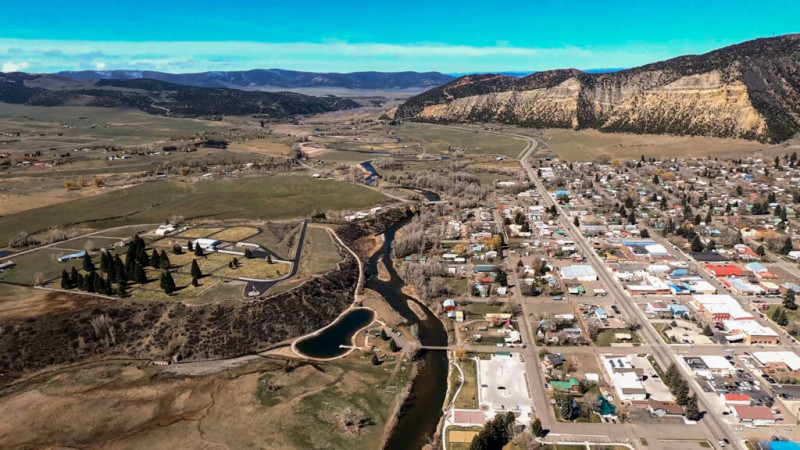
They’re not alone in that quest.
Wyoming ranchers are pushing for a new dam to be used for irrigation. Colorado has some diversions already under construction, with more proposed across the state, to help fuel growth.
Across the states of the Upper Basin of the Colorado River—Wyoming, Colorado, Utah and New Mexico—new dams are rising and new reservoirs are filling, with more being proposed. In all, the projects have the potential to divert the amount of water Nevada is allocated from the river each year.
The project in Rangely, Colorado, and ones like it come at a crucial time for the West as the federal government, seven states and 30 tribes that rely on the Colorado River look to use less and find solutions to save the system’s integrity.
Communities across the Colorado River Basin are facing a reckoning. The river that’s helped enable the Southwest’s rapid growth and vital agricultural production is diminishing in a megadrought, with its flows declining roughly 20 percent over the past two decades. The federal Bureau of Reclamation has reduced water allocations in recent years, declaring a Level 1 shortage for next year. The seven basin states, tribes and federal government are in negotiations to cut even more. And cities and states are scrambling to find new water supplies.
Critics of the proposals for new dams and reservoirs say the time for diverting more water from the river ended decades ago, but supporters argue the projects are essential to help ensure adequate supplies in the upper half of the Colorado River Basin, which currently has little storage capacity for times of extreme drought.
In the Upper Basin states, little infrastructure exists to divert and store water. Instead, they rely “on what Mother Nature is giving us,” said Rebecca Mitchell, Colorado’s Commissioner to the Upper Colorado River Commission. “We can’t use water that doesn’t exist as snowpack in Colorado.”
Proposals of new dams and reservoirs in the Upper Basin are not intended to be huge water diversions like Lake Mead or Lake Powell, she said. The smaller projects are designed to even out wet years with dry ones so water managers don’t have to enforce drastic cuts when drought hits.
Critics, however, say the proposals are not based on what the system can actually provide, given climate change and historic overuse of the river’s resources, and are last-minute efforts by the Upper Basin states to develop their water rights before current operating guidelines for the river expire in 2026. After that, the Colorado River Basin states enter into new agreements that have the potential to drastically change how the river is governed.
“There’s paper water out there,” said Kyle Roerink, executive director of the Great Basin Water Network, of documents describing water that may not really exist in the river. “And those guys believe that they should be able to develop every drop of it.”
The real fight, he and others said, is what happens between now and 2026, when the new guidelines are negotiated.
That battle is gearing up, with the public comment period on the bureau’s Supplemental Environmental Impact Statement for post-2026 operations ending Aug. 15. In a letter to Reclamation, the Upper Colorado River Commission called for the federal agency to permanently cut Lower Basin allocations, recognize the Upper Basin can only use what nature provides and to “not interfere with the rights of any state to administer and regulate water within its boundaries,” such as by building new water diversions to make the most of a state’s allocation.
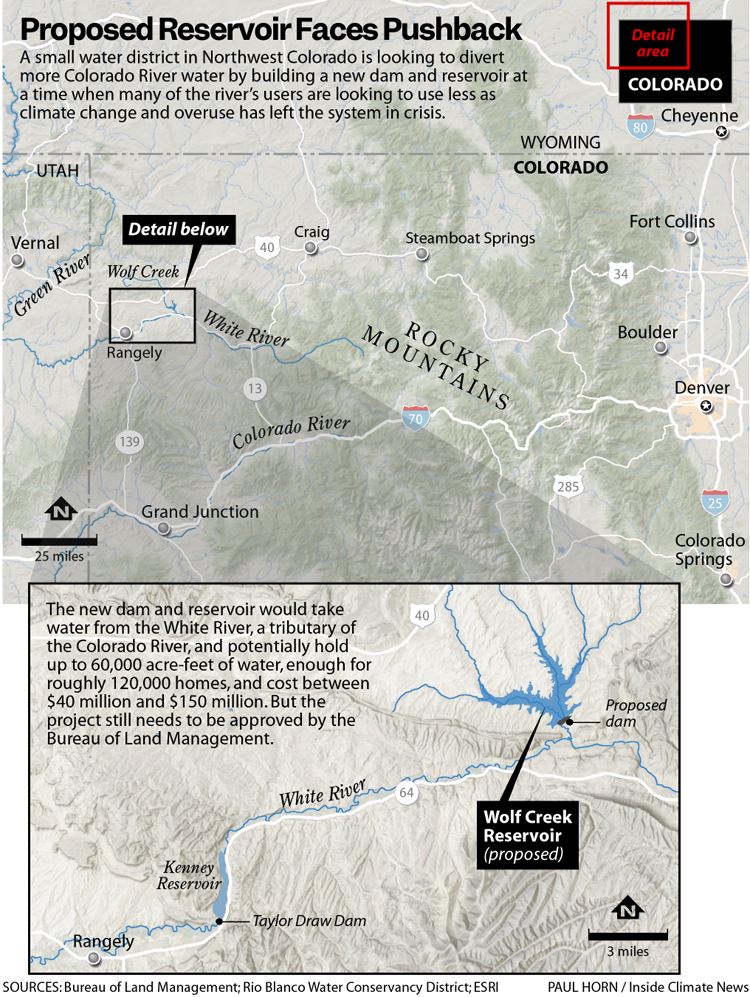
The proposals come as other dams across the country face being torn down and new research reveals the hydropower they generate is not as clean as many once thought due to methane emissions from their reservoirs. They can also have serious ecological consequences. Four fish species native to the Colorado River, for example, have been listed as endangered or threatened following the construction of water diversions throughout the basin.
“A lot of [dams] are being built under this myth that hydropower is clean energy, and of course, it’s not true,” said Gary Wockner, a longtime environmental activist with Save the Colorado who has dedicated part of the past decade to raising awareness about reservoir emissions.
As these projects advance, more pushback will come.
Conservationists, water advocacy groups and some locals already oppose the proposed dam and reservoir near Rangely. According to court filings, during the process to settle the water rights for the project, named the Wolf Creek Reservoir, even Colorado’s own Division of Water Resources was “not convinced” that the water the project diverted would be put “to beneficial use within a reasonable period of time.” The project is now part of the state’s water plan, which calls for the creation of new water storage to make use of its full water rights as part of Colorado’s solution to drought.
But the state’s water department doesn’t have the final say on a project receiving a water right. Nor does the Bureau of Reclamation, the federal agency that manages the Colorado River and its dams and reservoirs. The decision to potentially allow over 60,000 acre feet to be diverted came down to a state judge in 2021 and the final decision to allow for construction will come from the Bureau of Land Management because the proposed site of the project is on federal land administered by the BLM.
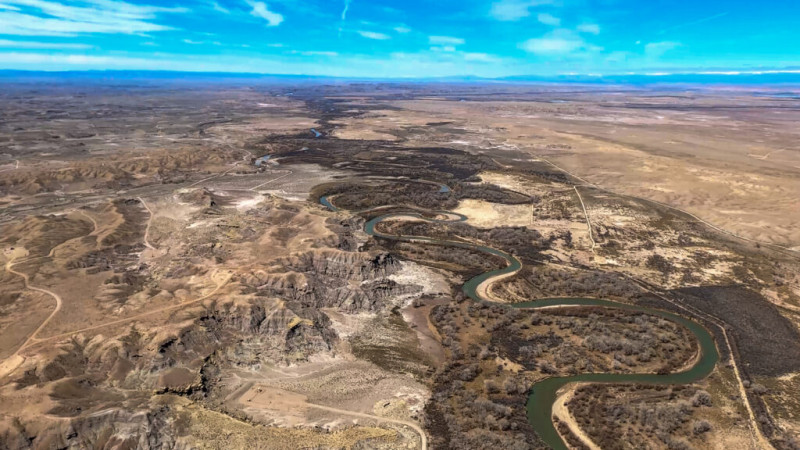
There’s also the question of how a water district for a town with a declining population of just over 2,000 people will find the money to build it—something even residents who support it worry about. But officials of the Rio Blanco Water Conservancy District, which is behind the project, say they have to try, despite the dim financial prospects. Their current reservoir has almost completely filled with silt, leaving Rangely with no water storage for emergencies and fewer opportunities for recreation. It even runs the risk of losing the ability to generate hydropower at the local dam.
Wolf Creek Reservoir, they say, could fix that, providing the town additional storage in case of drought, the ability to generate more hydropower for the community or to sell and the opportunity to expand agricultural operations as the oil and gas industry declines in the region.
“We’re going through these huge transformations,” said Wade Haerle, a consultant for the Rio Blanco Water Conservancy District. “We’re trying to get ready for it. We’re trying to keep our tax base up. We’re trying to keep our schools going. We’re trying to keep the ambulance district paid.”
The water district, he said, is just doing its part to keep the community afloat.
‘We Only Have to Worry About Ourselves’
Between Rangely and another Colorado town named Meeker, cattle graze alongside the red houses on Deirdre Macnab’s ranch. She moved here seven years ago to start a regenerative ranch, where the cattle graze for a single day on a strip of pasture before they are moved to the next one, mimicking the grazing patterns of bison to better preserve the land. Her big issues are voting rights and climate change, and her goal is to prove her style of ranching can be more profitable and better for the environment.
Adjacent to her property, on federal land that her cattle sometimes graze in a valley between two small mountains next to the White River is the site of what she calls a potential “environmental catastrophe”: the proposed Wolf Creek Reservoir.
Walking through the public land where the project will be built if approved, Macnab pointed to ground where vibrant green grass and flowers were regrowing after her cattle had grazed the site two weeks earlier. Few people will benefit from the project if it gets built, she said, given the small and declining population in the county. In recent years, the district has lost money, leading her and others to think the community can’t afford it. Since the water would be in a reservoir, it will suffer evaporative loss, which the water district estimates would be around 6,800 acre-feet per year. Worse, she said, the already degraded land around her property will deteriorate further if the project gets built because of how dams and reservoirs negatively impact local environments. She fears the creation of the reservoir will disrupt the natural flood irrigation process, impacting groundwater storage, and cause more harmful algal blooms.
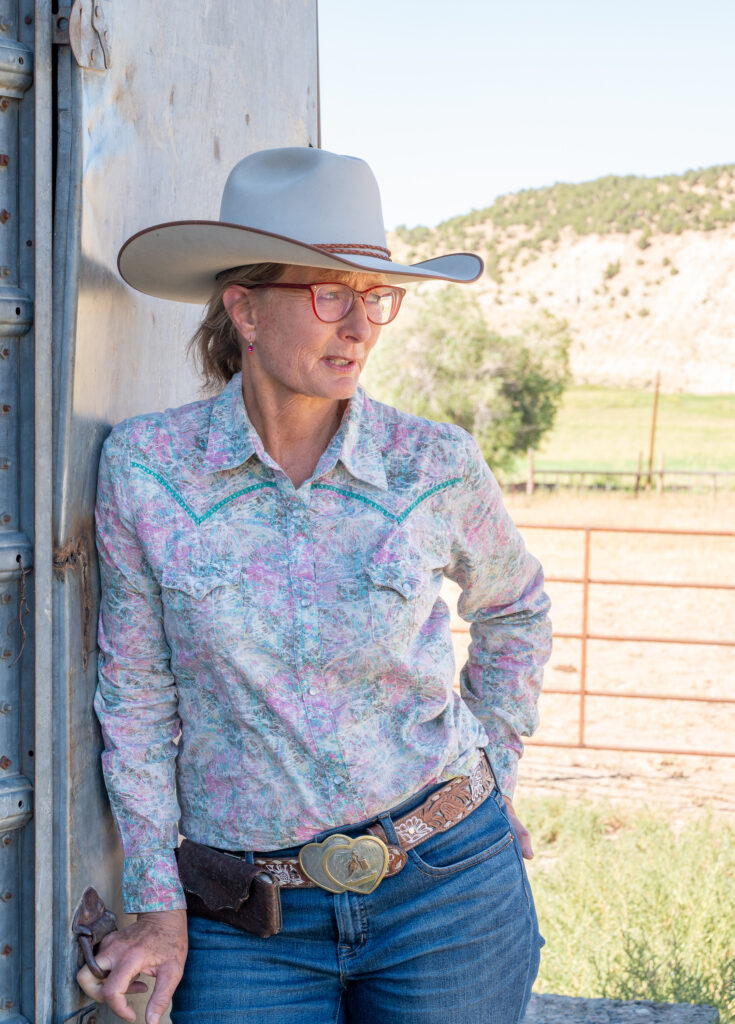
“It’s very easy when there’s money chasing for stupid projects to get built,” Macnab said. “To me, this is like that Alaska ‘bridge to nowhere.’ This is a particularly stupid reservoir, and we can’t afford stupid reservoir projects.”
Diverting water from the Colorado River is nothing new; the creation of Lake Mead and Lake Powell, the nation’s two largest reservoirs, which can store over 50 million acre feet when they are both full, facilitated the rapid growth of the Southwest over the past century by turning the river’s water into a resource used by cities and farmers throughout the region. But those two reservoirs, along with other nearby water infrastructure, primarily benefit only the Lower Colorado River Basin states of California, Arizona and Nevada.
The Colorado River Basin is split in two by the Colorado River Compact and each half is governed differently. The Upper Basin is required to deliver 7.5 million acre feet of water to the Lower Basin states, and gets what is left over for its own use. In theory, that’s another 7.5 million acre feet of water.
The Upper Basin states use far less than those in the Lower Basin—historically, around 4.5 million across all four states, so current negotiations on how to reduce demand for Colorado River water come down to cutting how much is used by California, Arizona and Nevada, which use their full allocation and more.
Colorado and its Upper Basin neighbors, some argue, still have water to develop.
“The [Colorado River] Compact is important because we don’t have to care about how fast the Lower Basin grows,” Haerle said. “We only have to worry about ourselves.”
The Rio Blanco Water Conservancy District’s proposal to build the Wolf Creek Reservoir, Haerle said, is an opportunity to store Colorado River water for Colorado and help stimulate a small community’s economy. “It’s better to have it stored in Colorado than stored at Powell, and, of course, once you get to Powell nobody [in the Upper Basin] can use it.”
In Colorado, water providers can receive a conditional water right from the state’s water court, which allows them to receive a right to water and potentially develop it years later, something many of the currently proposed diversions would do, including the Wolf Creek project. Some of those conditional rights would be the most senior in the prior appropriation system, in which the first users with a right to use the water are the last to have their right reduced or cut. So if the conditional rights are developed, more junior downstream users could see their water supply seriously threatened.
Colorado officials view conditional water rights as just a state issue, since Colorado has water allotted to it that has yet to be developed and used, but academics and activists alike argue the impacts on other users are being ignored and left out.
“It’s not just Colorado users impacted by this—it’s all these people downstream as well,” said Mark Squillace, a law professor at the University of Colorado, Boulder specializing in natural resources. “And we all know that the Colorado River is already over appropriated.”
The idea that the Upper Basin can still develop water “is just a myth,” Squillace said.
“There was not the water that we thought there was in the Colorado River when these agreements were forged in 1922 to form the Colorado River Compact,” he said. “So in my mind, it’s a little unreasonable and unfair to suggest that somehow we’re still appropriating water that we were owed.”
Accumulating Silt Behind Existing Dam Drives Push for a New One
Just up the road from Rangely is the Kenney Reservoir and Taylor Dram Dam, built in the 1980s, with the ability to store 13,800 acre-feet of water and generate 20,000 kilowatts of hydropower.
From the inception though, there was a problem: its developers knew the reservoir would silt up.
When dams are put in along a river, they don’t just stop the flow of water, they also stop the flow of sediment like mud and clay from continuing downstream. Instead, they build up behind the dam, gradually reducing the amount of water that can be stored and eventually reducing how much power the dam can generate.
Silting has chipped away at Kenney Reservoir’s capacity. It now stores just 2,145 acre feet of water and most of the reservoir has transformed from a lake into marshlands.
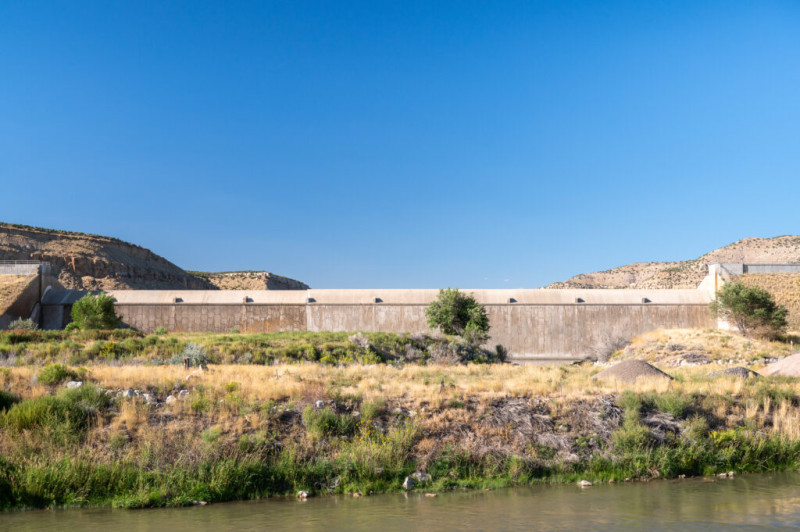
So, over a decade ago, the Rio Blanco Water Conservancy District began looking for other ways to store water to help diversify the region’s economy and to generate electricity when the White River’s flows are low, which officials say is increasingly common as the area has warmed.
According to the district, dredging the existing reservoir would be too costly at an estimated $700 million. The most cost-efficient solution, Haerle said, was to build a new dam and reservoir, allowing them to store more water and release it when needed to generate more hydropower downstream at Taylor Draw Dam, while also allowing for more emergency storage for the town and more water for farmers.
Cost is still the major worry for the project. The district itself lost money last year. If they get the final approval from the BLM to begin building, Haerle said they expect to spend $40 million to $150 million to construct the dam, depending on how big it ends up being, but opponents say that price tag is an underestimate.
Even before the district can begin worrying about cost, it has to go through an environmental review from the BLM and receive permits to build, during which the project will receive pushback from environmental groups and residents.
For years, Wockner, with Save the Colorado, has kept track of proposed river diversions. As negotiations ramp up on cutting back use of Colorado River water, the seven basin states are competing amongst themselves to keep as much of their allocations as they can. In the Upper Basin, it’s a race to build as much as they can before they can’t, he said.
His group will fight Wolf Creek “to the bitter end,” he said. “Through all of this chaos and unlogic, the health of the ecosystem and river is completely ignored.”
‘No Other Solution’
Mother Nature will have her say on how these proposals play out—now and in the future.
Flows on the Colorado River have declined nearly 20 percent over the past two decades because of climate change, and overuse of the river’s water has left Lake Mead and Lake Powell on the brink of being unable to generate hydropower at their dams or allow the river to flow past them.
Any new water diversions in the Upper Basin could lead to curtailment, when its allocation of the river’s water would be cut. Every 10 years, the Upper Basin is required to deliver 75 million acre feet of water to the Lower Basin—7.5 million every year. If it fails to send what’s required, the Upper Basin’s allocation could be cut.
Colorado water officials said the Upper Basin hasn’t come close to not being able to meet its requirements under the Colorado River Compact. But with more water potentially being taken out of the river and studies predicting Colorado River flows will continue to decline in coming decades, experts say the risk could grow.
“Reservoirs are not going to solve this problem,” said John Cyran, a senior staff attorney with Western Resource Advocates who formerly worked for the Colorado Attorney General’s Office on state water issues.
Officials at the Rio Blanco Water Conservancy District, however, say they have to at least try to build the project as responsible water managers for their community. And state officials say as long as Colorado’s constitution allows for users to ask for water that hasn’t been adjudicated yet, new users and projects will apply for rights to it.
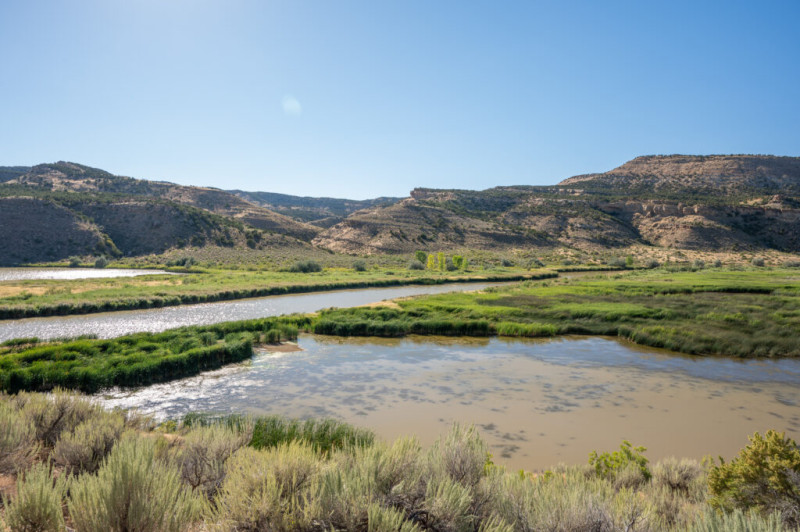
State officials and opponents of the project do agree on one thing: Colorado River users can no longer continue with the same practices that got the basin into its current situation.
“It’s not about living the same way we have the last 100 years and trying to manipulate the system to do that,” said Mitchell, Colorado’s Commissioner to the Upper Colorado River Commission. “It’s about recognizing that we have to figure out what change needs to happen.”
New dams and reservoirs in the Upper Basin can’t be like Lake Mead and Powell, she said, where more water is sent out than goes in. Innovation will be needed, as will adhering to what nature allows if Colorado River users are to “preserve the future of the American West,” Mitchell said. “There’s no other solution.”
Disclaimer: The copyright of this article belongs to the original author. Reposting this article is solely for the purpose of information dissemination and does not constitute any investment advice. If there is any infringement, please contact us immediately. We will make corrections or deletions as necessary. Thank you.







